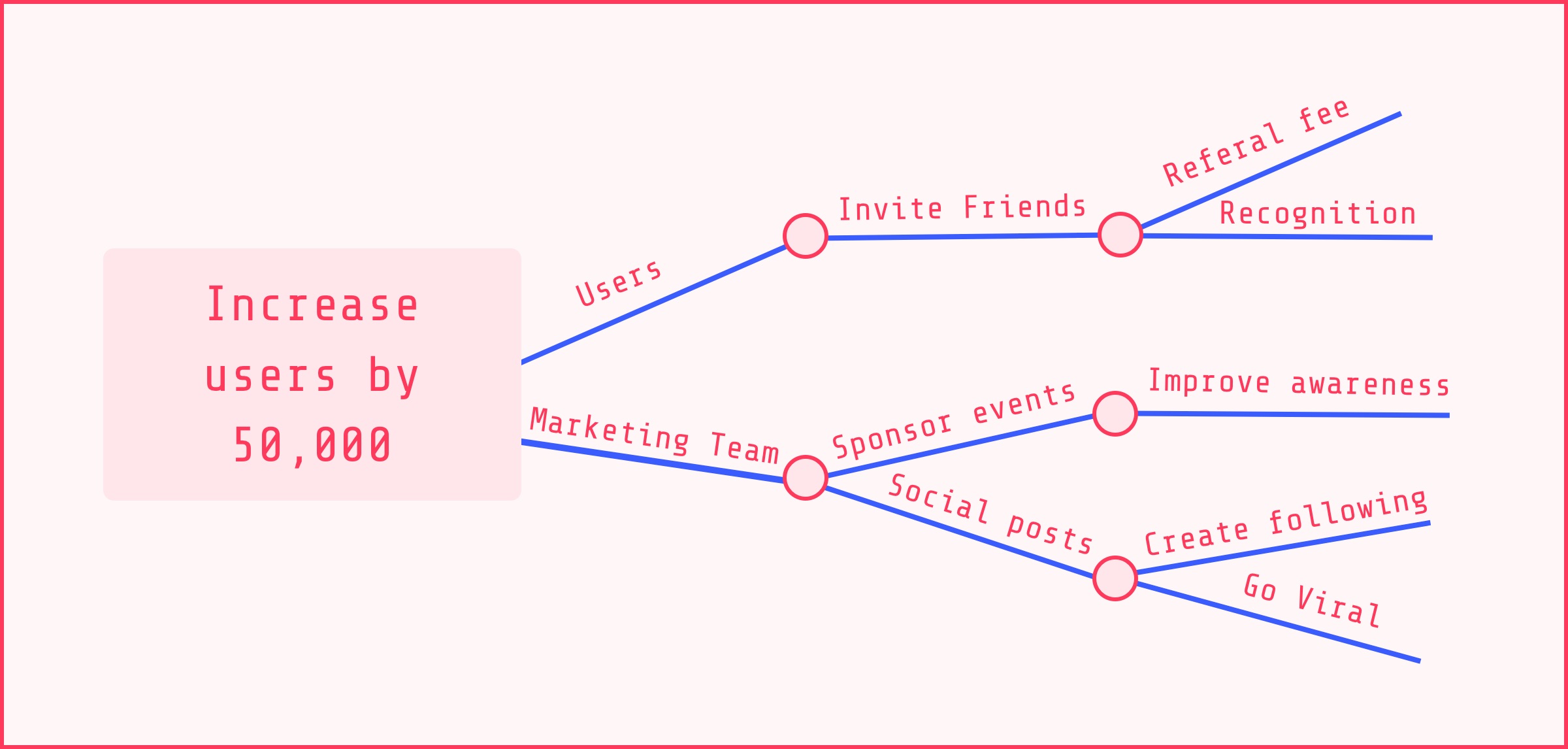
An impact map is a visualisation of scope and assumptions, created collaboratively by business and senior technical people.
It's a great way to visualise scope and assumptions. It can significantly improve the way many teams and organizations build products and deliver projects. It can also help reduce scope creep, over engineering and helps us focus on our business objectives.
Let's have a quick run through how it works.
Step 1 Goal (why are we doing this)
Business goals are often defined in vague terms. Infact many members of an organisation outside upper management may not even know what the current business goals and objectives are.
Goals should present the problem to be solved, not the solution and they should explain why such a thing would be useful. Good goals tend to be SMART: Specific, Measurable, Action-oriented, Realistic and Timely.
Step 2 - Who (We define the actors)
- Who do we want to impact?
- Who can produce the desired effect?
- Who can stop us?
- Who are the users of our product?
- Who can influence the outcome?
It is important to be specific (e.g. a certain person, subscriber users etc). These actors will help us prioritise work better. For example we might want to satisfy the most important actors first.
We also need to think about how important the actors are. For example we should group our actors into primary, secondary and off-stage.
Primary are the ones whose goals are met (for example shoppers of an e-commerce store).
Secondary actors are the people or groups / teams providing the services (e.g. digital marketing team).
Off-stage actors are people or groups / teams who have an interest in the behaviors but are not directly providing services or benefiting from them.
Step 3 - How (Impacts)
Here we detail what an actor can do to influence our goal. Some basic questions might be:
- What can the actor do to help us achieve our goal?
- How can an actor's behavior change to help us achieve our goal?
- How can they prevent us from succeeding?
Avoid listing software features, and focus more on business activities.
Step 4 - What (Deliverables)
Here we look at scope, the meat & potatoes of our impact map. Roughly speaking we are looking at deliverables, software features and organisational activities. A basic question we can ask ourselves: What can we do to support the impacts?
Once we have our map, any deliverables that would cost little to the organisation (time, money etc) but provide a large impact to the business (belong to our primary and secondary actors) should be prioritised. In short it becomes obvious where the low hanging fruit lies.
It should be plain to see that software products and bespoke web systems can play a huge roll in impacting any business. If you would like to have an informal chat, get in touch and we can get started seeing where impact lies in your organisation.
This is just an introduction to the process and it should be noted that this is a process and not an event. It will continually need to be assessed once more information is gathered.
See our Factory system case study for an example. A great book to read more about this is: "Impact Mapping" by Gojko Adzic.